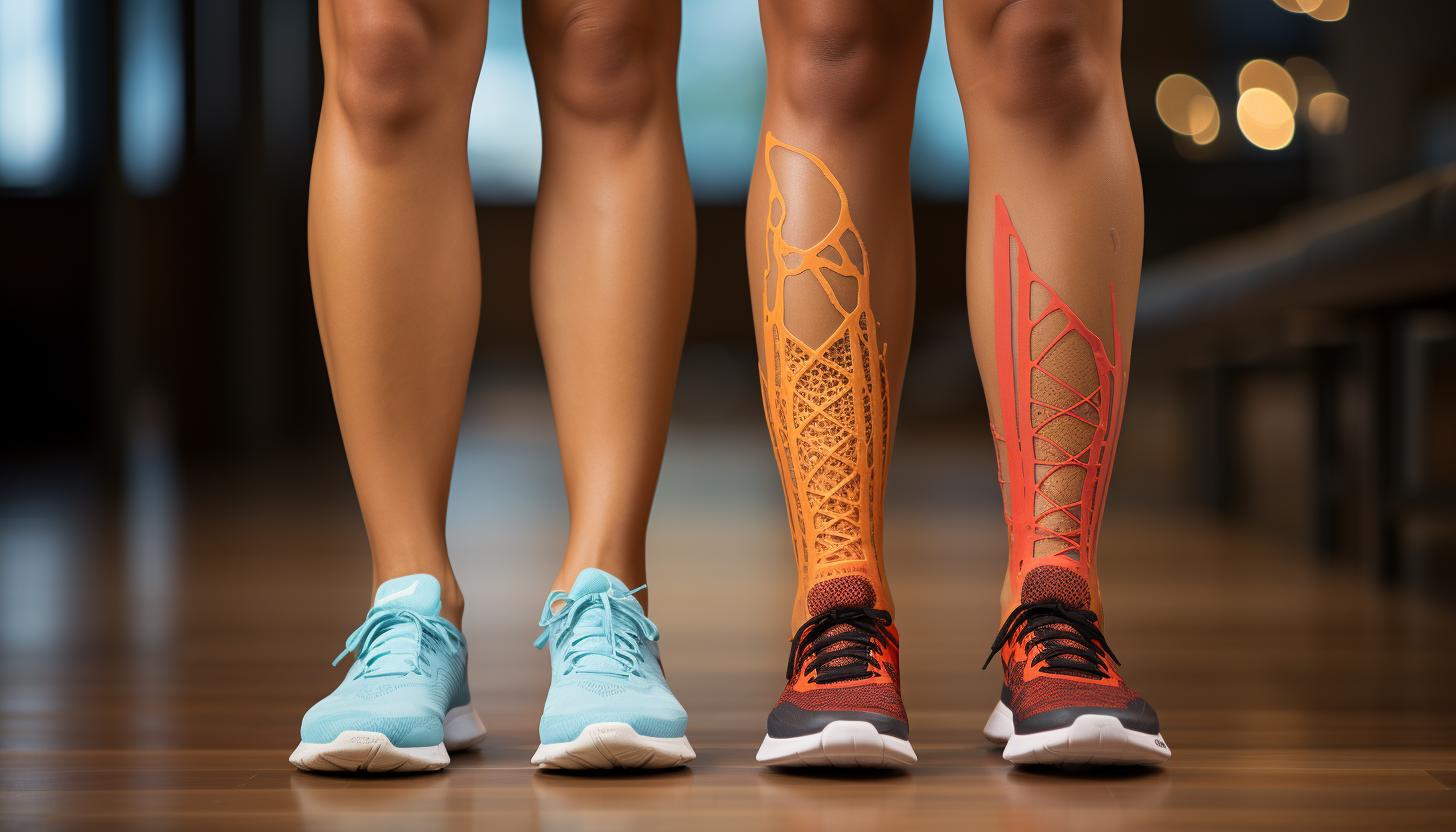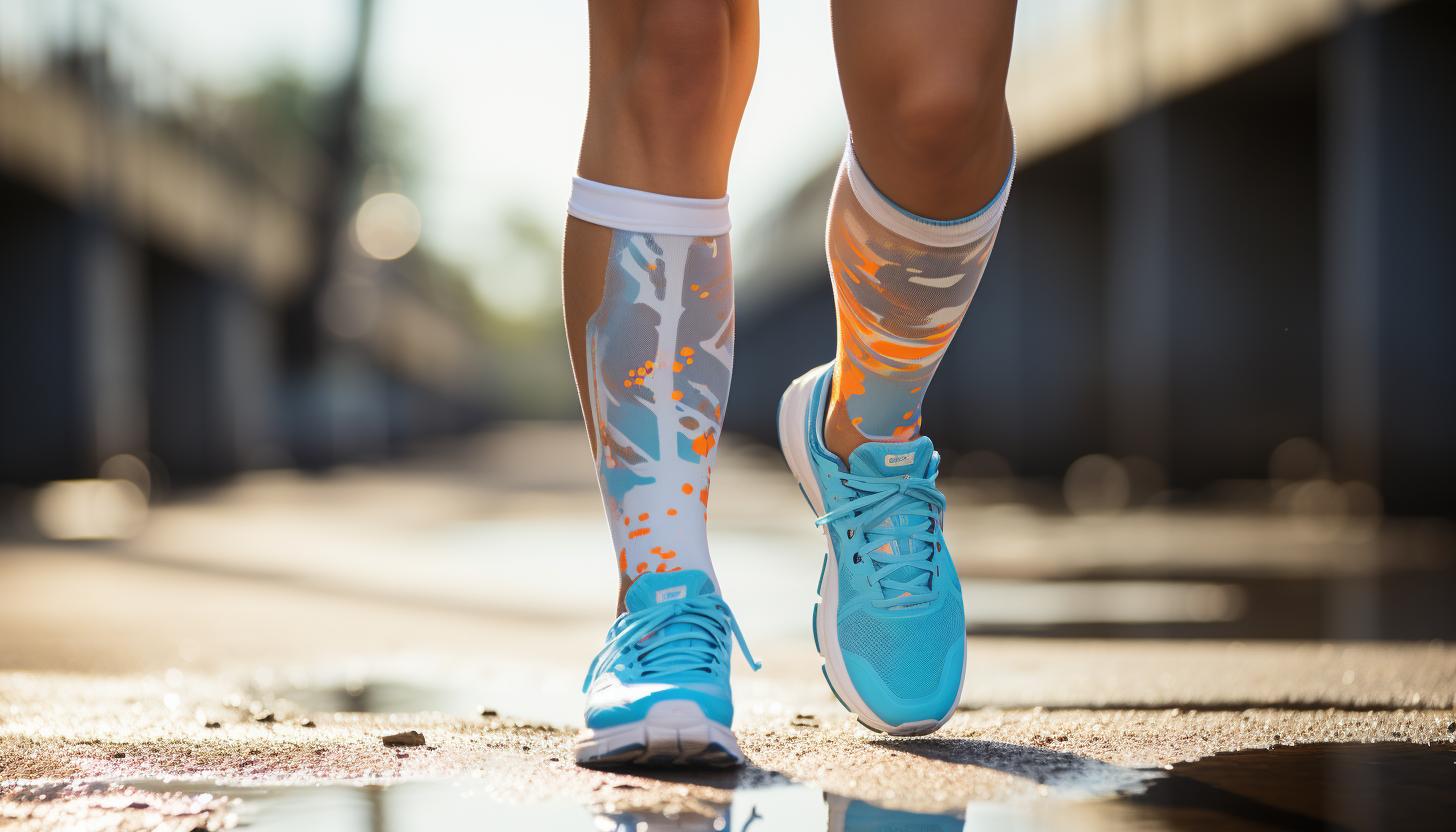Common Marathon Injuries and How to Treat Them

Are you a marathon enthusiast? Well, no pain, no gain! But don’t worry, we’ve got your back.
In this article, we’ll explore common marathon injuries and provide you with evidence-based tips on how to treat them effectively. From sprained ankles to runner’s knee, we’ll cover it all.
So lace up your shoes and get ready to conquer those miles without the fear of injury holding you back.
Let’s dive in and make sure your next marathon is injury-free!
Types of Marathon Injuries

Now let’s talk about the most common types of marathon injuries and how you can treat them. Marathon injury prevention is crucial for every runner to ensure a safe and successful race.
Understanding the common causes of marathon injuries can help you take proactive measures to avoid them.
One of the most prevalent marathon injuries is shin splints, which are characterized by pain along the front of your lower leg. This occurs due to repetitive stress on your shinbone and surrounding tissues. To treat shin splints, rest is essential along with ice packs, compression wraps, and over-the-counter pain relievers.
Another frequently encountered injury is runner’s knee, also known as patellofemoral pain syndrome. It causes pain around or behind your kneecap and results from improper tracking of the kneecap during running. Treating runner’s knee involves rest, ice therapy, strengthening exercises for the hips and thighs, as well as wearing supportive footwear.
Lastly, Achilles tendinitis is a common injury among long-distance runners. It manifests as pain in the back of your heel or lower calf due to inflammation in the Achilles tendon. Treatment typically includes resting, applying ice packs regularly, performing stretching exercises for calf muscles, using orthotic inserts in shoes for additional support.
By understanding these common types of marathon injuries and their treatment options, you can take proactive steps towards preventing them while preparing for your next race.
Remember to listen to your body and seek medical advice if needed to ensure a safe and enjoyable running experience.
Symptoms to Look Out for

Be on the lookout for any noticeable symptoms when training for a marathon. It’s important to be aware of warning signs that may indicate an injury or overexertion. Pay attention to your body and listen to what it’s telling you.
Common warning signs include persistent pain, swelling, or tenderness in joints or muscles. If you experience sharp or shooting pains, it could be a sign of a more serious injury such as a stress fracture. Another symptom to watch out for is excessive fatigue that doesn’t go away with rest.
If you notice any of these symptoms, it’s crucial to seek medical attention right away. Ignoring them and pushing through can lead to more severe injuries that may require longer recovery times.
Treatment options for marathon injuries vary depending on the type and severity of the injury. Rest is often recommended along with ice packs, compression wraps, and elevation (RICE) therapy. Physical therapy exercises can also help with rehabilitation and strengthening.
In conclusion, being mindful of the warning signs during marathon training is essential for preventing further damage. Prompt treatment can help minimize recovery time and get you back on track sooner.
Now let’s discuss immediate first aid for marathon injuries…
Immediate First Aid for Marathon Injuries

If you notice any warning signs such as persistent pain or swelling, it’s important to seek immediate medical attention for proper first aid in marathon injuries.
Treating muscle cramps and managing blisters are two common concerns that runners may encounter during a marathon.
Muscle cramps can be extremely painful and can significantly impact your performance. To treat muscle cramps, it is recommended to stop running immediately and gently stretch the affected muscle. Applying heat or cold packs can help alleviate the pain and reduce inflammation. It is also essential to stay hydrated and replenish electrolytes by drinking sports drinks or consuming salted snacks.
Blisters are another common issue faced by runners, especially those wearing ill-fitting shoes or socks. To manage blisters, it is crucial not to pop them as this can lead to infection. Instead, clean the area with mild soap and water, then cover it with a sterile bandage or blister pad. If a blister bursts on its own, clean the area thoroughly with antiseptic solution and apply an antibiotic ointment before covering it.
Rehabilitation and Recovery Techniques

To speed up your recovery and regain optimal function, it’s important to follow a comprehensive rehabilitation program after sustaining marathon-related injuries. This program will not only help you heal faster but also prevent future injuries. Here are four key components of a successful marathon rehabilitation plan:
1. Rest: Rest is crucial for allowing your body to recover from the intense physical demands of a marathon. It gives your muscles time to repair and rebuild, reducing inflammation and preventing further damage.
2. Physical therapy: Physical therapy plays a vital role in marathon rehabilitation by helping you regain strength, flexibility, and range of motion. A skilled therapist can create an individualized treatment plan that includes exercises to improve muscle imbalances, enhance joint stability, and promote proper biomechanics.
3. Gradual return to activity: Rushing back into training too quickly can lead to re-injury or new complications. Gradually increasing your activity level under the guidance of a healthcare professional will ensure a safe transition back into running.
4. Cross-training: Incorporating other forms of exercise like swimming or cycling during your recovery period can help maintain cardiovascular fitness while reducing stress on injured areas.
Preventing Future Marathon Injuries

When it comes to preventing future marathon injuries, it’s important that you prioritize proper warm-up and cool-down routines. These routines play a crucial role in preparing your body for the physical demands of running and aiding in recovery afterwards.
Warm-ups help increase blood flow to your muscles, making them more flexible and less prone to injury. Cooling down after a run helps reduce muscle soreness and stiffness.
To prevent injury recurrence, it’s essential to listen to your body and not push through pain. Ignoring warning signs can lead to long-term damage. Incorporating strength training exercises into your routine can also help prevent future injuries by improving overall muscle strength and stability.
In addition, adopting long-term injury prevention strategies is crucial for maintaining your running health. This includes gradually increasing mileage, wearing appropriate footwear, cross-training to strengthen other muscle groups, and incorporating rest days into your training schedule.
Ultimately, preventing future marathon injuries requires a proactive approach that focuses on proper warm-up and cool-down routines, listening to your body, incorporating strength training exercises, and adopting long-term injury prevention strategies. By taking these steps, you will be well-equipped to enjoy the benefits of marathon running while minimizing the risk of future injuries.
Conclusion
Congratulations on completing the article! Now it’s time to wrap things up with a captivating conclusion.
You’ve made it through the marathon injuries and learned how to treat them effectively. Armed with knowledge, you can now conquer any hurdle that comes your way.
Remember, prevention is key to staying injury-free in the future. So lace up those running shoes, listen to your body, and keep pushing forward towards new victories.
Just like a well-oiled machine, you’ll continue to improve and surpass your limits with each stride taken.
Happy running!






